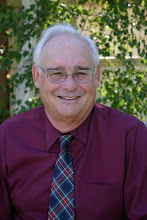A recent Fresno Bee editorial demanded leaders in its city get their “act together.” The same goes for their counterparts in Kern County as the scramble for federal stimulus funds to build a high speed rail system shifts into high gear.
President Obama last week announced that California will receive $2.3 billion, the largest share of an $8 billion allocation to build high speed rail systems in 13 of the nation’s transportation corridors.
Californians are a long way from buying a ticket to ride a high-speed train in this state. A debate still rages over the system’s $42.6 billion construction price tag, ongoing operating costs and its disputed business plan.
But with voters approving $9 billion in bonds in 2008 to help finance the system and now with $2.3 billion in federal job-creation funds promised, it appears some aspects of the project will become a reality.
The big “prize” for the Central Valley is the construction of a test track and heavy maintenance facility.
Fresno leaders want the facility, which will employ 1,500 people, including train operators, engineers and rolling stock maintenance staff, built in Fresno. Kern County leaders want it built on one of two local sites – one in Shafter, the other in Wasco.
By the Jan. 15 deadline, the California High Speed Rail Authority had received 15 “expressions of interest” from valley communities, including Fresno’s and Kern’s.
The Fresno Bee called the heavy maintenance facility “the most important economic development project that Fresno County could hope to lure to our community. … That’s why the competition will be stiff, and Fresno County must have a first-class proposal every step of the way. No internal bickering. No local turf battles. We don’t need a repeat of Merced getting the University of California campus because Fresno did not have its act together.”
Funny thing: In news reports coming out of Merced are chest-thumping vows to “do it again” to Fresno and the rest of the valley. Merced community leaders are dragging out the game plan they used to snatch the UC campus away from competitors years ago. Now they are promoting the former Castle Air Force Base for a heavy maintenance facility.
The Central Valley is critical to high speed rail’s development. The valley’s flat, open and rural stretches allow the 220 mph trains to be tested and certified for use in other parts of the United States. The test track will become part of California’s high speed rail system that will take passengers from Los Angeles to San Francisco.
To be in the running, a site must meet minimum criteria, including being near a proposed HSR route; having a parcel shaped and sized to accommodate the facility; and having other transportation linkages, access to utilities, appropriate zoning and an available labor force. The site also should not be encumbered with environmental problems.
Kern’s Shafter site is 640 acres located on the east side of existing railroad tracks, north of 7th Standard Road, adjacent to the International Trade and Transportation Center, and near Kern County’s Meadows Field Airport.
The Wasco site is 421 acres located south of Highway 46, near J Street, in an undeveloped industrial area, with existing railroad tracks nearby.
A final selection, which will be made by HSRA directors in about 15 months, will be based on more than basic criteria, and environmental and economic considerations. It also will be based on politics and salesmanship.
Fresno already is guaranteeing it will “sweeten” the deal by scraping together $25 million to buy and donate the land. Clearly all the competitors will have to come up with “sweeteners,” requiring contributions from private investors and local public agencies.
A campaign to promote the Shafter and Wasco sites to HSRA directors, private investors and local taxpayers is needed.
Ray Watson, chairman of the Kern County Board of Supervisors and a Kern Economic Development Corp. director, has wisely called for the creation of a blue ribbon committee to get our community’s “act together.”
The “prize” Kern County, Shafter, Wasco and all of metropolitan Bakersfield stands to win: 1,500 high-paying permanent jobs, many more construction jobs, increased tax revenues to support public services, and increased business for support services and related industries.
This is a multi-million dollar prize worth fighting for.
This article by John Hardisty (Jack) appeared first in The Bakersfield Californian on Feb. 3, 2010. Hardisty is a Bakersfield, Calif., mediator and land-use planning consultant. He can be contacted through his Website www.svs2help.com/
Subscribe to:
Post Comments (Atom)


No comments:
Post a Comment